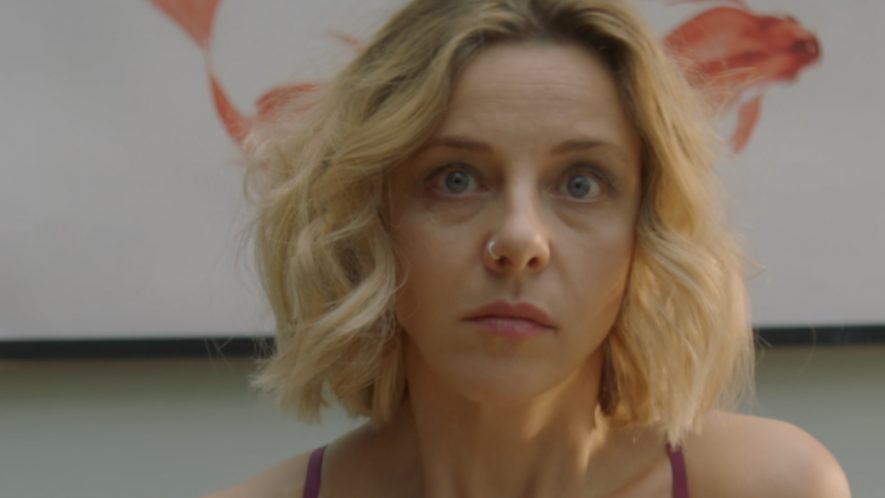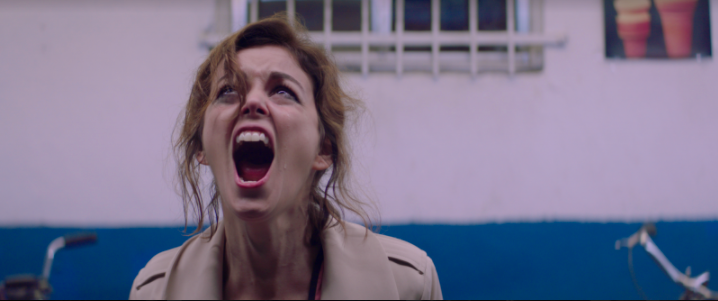10 Short Films That Every Filmmaker Should Know
Every filmmaker and film-lover should know these 10 shorts. From surrealism, to science-fiction, to anime – this list spans a century of films that have paved the way for short cinema.
10. La Maison en Petits Cubes [つみきのいえ] (Dir. Kunio Katô, 2008)
“A haunting, painterly meditation on climate change and the passage of time from Japan”
-Steph Green (Film Critic, New York Times)
La Maison en Petits Cubes (つみきのいえ, Tsumiki no Ie, “The House of Small Cubes“) tells the story of a grandfather’s memories as he adds more blocks to his house to stop the flooding waters. Japanese director, Katô, is revered for breaking the conventions of anime by editing and animating against fast and quick motions, as soft music from Kenji Kondo eases all tension and friction. It won several prizes, including The Annecy Cristal at the 32nd Annecy International Animated Film Festival and the Academy Award for Best Animated Short Film at the 81st Academy Awards.
9.Integration Report 1 (Dir. Madeline Anderson, 1960)
“Anderson is a pioneer of African American cinema and television, of the most important media producers/directors of the 1960s”
–Kimberly Springer (Still Lifting, Still Climbing: African American Women’s Contemporary Activism, 1999)
Now recognized as the first documentary directed by an African American woman, Integration Report 1 chronicles the struggle for black equality in Alabama, Brooklyn and Washington, D.C. It incorporates footage by documentary legends Albert Maysles and Ricky Leacock, protest songs by Maya Angelou, and a speech by Martin Luther King, Jr. Initially intended as the first in a series of such “Integration Reports,” Anderson’s film stands as a testament to the courage of the workers and activists as well as her own bravery, tenacity and skill. The film was recently preserved by the Smithsonian’s National Museum of African American History and Culture. Anderson is listed as the first African American woman born in the United States to direct a 16 mm documentary film. In 1993, Director Madeline Anderson was inducted in the Black Filmmakers Hall of Fame.
8. Ratcatcher ( Dir. Lynne Ramsay, 1999)
“One of the most distinct and important voices to emerge from the United Kingdom in recent years.”
-Lizzie Francke (Film Critic, Criterion Collection)
Ramsay’s debut film Ratcatcher screened at the 1999 Cannes Film Festival and won its director numerous awards at the BAFTA Awards, the London Film Festival and the Silver Hugo for Best Director at the Chicago International Film Festival. Despite the numerous awards the film never received a wide cinematic release. It has gone on to become a modern day classic. The Taste of Cinema put Ratcatcher fourth in the list of the fifteen greatest Scottish films of all time. Lynne Ramsay is best known for directing You Were Never Really Here featuring Joaquin Phoenix.
7. Meet Marlon Brando (Dir. , Charlotte Zwerin, Albert Maysles, David Maysles, 1966)
“The Maysleses were among the exemplary modernists of the era, including themselves in the onscreen action and making their presence felt, physically as well as ethically, as audaciously as any avant-gardism”
– Richard Brody (Film Critic, The New Yorker)
In this 1966 documentary, Meet Marlon Brando, journalists interview Marlon Brando in a New York hotel room in one of the rarest, rawest interactions we have of this legendary actor.
6. Rejected (Dir. Don Hertzfeld, 2001)
“The cartoon that invented internet culture.”
-Brian Feldman (Film Critic, The New Yorker)
Rejected is known as a hilarious collection of animated television commercials that was rejected because of their creator’s failing grip on sanity. It is a hand-drawn expression of surrealism and has been imitated by a number of nihilistic, often Adult Swim-based animators over the last two decades. It was nominated for an Academy Award for Best Animated Short Film in 2001.
5. Trip to the Moon (Dir. Georges Méliès, 1902)
“A Trip to the Moon combines spectacle, sensation, and technical wizardry to create a cosmic fantasy that was an international sensation.”
– Foster and Dixon ( A Short History of Film, 2008)
 A Trip to the Moon (Le Voyage dans la Lune) is a 1902 French silent film directed by Georges Méliès. It’s considered one of the first science fiction films that revolutionized filmmaking and special effects. A group of professors launch themselves to the moon, nap on the lunar surface, kill moon aliens, return to Earth, and celebrate their journey with a parade in the city. A Trip to the Moon has been a legacy for nearly 120 years, influencing and inspiring artists in music, film and art. It was named one of the 100 greatest films of the 20th century by The Village Voice.
A Trip to the Moon (Le Voyage dans la Lune) is a 1902 French silent film directed by Georges Méliès. It’s considered one of the first science fiction films that revolutionized filmmaking and special effects. A group of professors launch themselves to the moon, nap on the lunar surface, kill moon aliens, return to Earth, and celebrate their journey with a parade in the city. A Trip to the Moon has been a legacy for nearly 120 years, influencing and inspiring artists in music, film and art. It was named one of the 100 greatest films of the 20th century by The Village Voice.
6. Meshes of the Afternoon (Dir.Maya Deren, Alexander Hackenschmied, 1943)
“A founding force in the emergence of the avant-garde film movement in New York”
-Petrolle and Wexman, (Women and Experimental Filmmaking, 2005)
 Through repetitive images and a set of black and white visuals, a woman’s inner desires (and dreams) play out on-screen. In 1990, Meshes of the Afternoon was selected for preservation in the United States National Film Registry by the Library of Congress as being “culturally, historically, or aesthetically significant,” going into the registry in the second year of voting. In 2015 the BBC named the film the 40th greatest American movie ever made.
Through repetitive images and a set of black and white visuals, a woman’s inner desires (and dreams) play out on-screen. In 1990, Meshes of the Afternoon was selected for preservation in the United States National Film Registry by the Library of Congress as being “culturally, historically, or aesthetically significant,” going into the registry in the second year of voting. In 2015 the BBC named the film the 40th greatest American movie ever made.
3. The Red Balloon (Dir. Albert Lamorisse, 1957)
“Lamorisse has got here a tender, humorous drama of the ingenuousness of a child and, indeed, a poignant symbolization of dreams and the cruelty of those who puncture them.”
– Bosley Crowther, (Film Critic, The New York Times)
A marvelous, imaginative and magical short film (the only to have ever won an Oscar for Best Original Screenplay and Palme d’Or for Best Short Film at the Cannes Film Festival,) with a beautiful musical score and layers of meaning in its simple story that it should speak to most children and make any adult feel like a child again. The Red Balloon ‘elegantly captures the adventures of a boy who befriends a seemingly sentient balloon and follows it through the streets of Paris.’
2. An Andalusian Dog (Un Chien Andalou) (Dir. Luis Buñuel and Salvador Dalí, 1929)
“The release of Un Chien Andalou signals the first considered eruption of poetry into the art of cinematography”
-Octavio Paz (Nobel Peace Prize Winner, Mexican Poet)
Luis Buñuel and Salvador Dalí present 17 minutes of bizarre, mind-bending imagery in this surrealistic film. The chronology of the film is disjointed, jumping from the initial “once upon a time” to “eight years later” without the conventional linear narrative. It uses dream logic in a circular flow that echoes the era’s psychology of free association. Un Chien Andalou is the Freudian representation of surreal cinema.
1.La Jetée ( Dir. Chris Marker, 1962)
“La Jetée is one of the most influential, radical science-fiction films ever made, a tale of time travel told in still image.”
-The Criterion Collection
 The pillar of French science fiction films, La Jetée manifests elements of the Left Bank artistic movement and meandering post-apocalypse dread. It captures dystopian elements, but also elucidates on humanism and the transience of time. A melancholy time travel narrative about memory, nostalgia, and ephemerality. Marker is the Tarkovsky of shorts – a true pioneer of short film cinema.
The pillar of French science fiction films, La Jetée manifests elements of the Left Bank artistic movement and meandering post-apocalypse dread. It captures dystopian elements, but also elucidates on humanism and the transience of time. A melancholy time travel narrative about memory, nostalgia, and ephemerality. Marker is the Tarkovsky of shorts – a true pioneer of short film cinema.

















